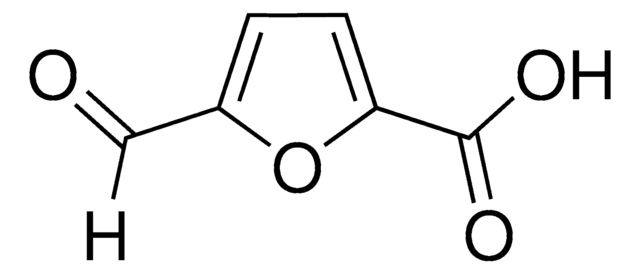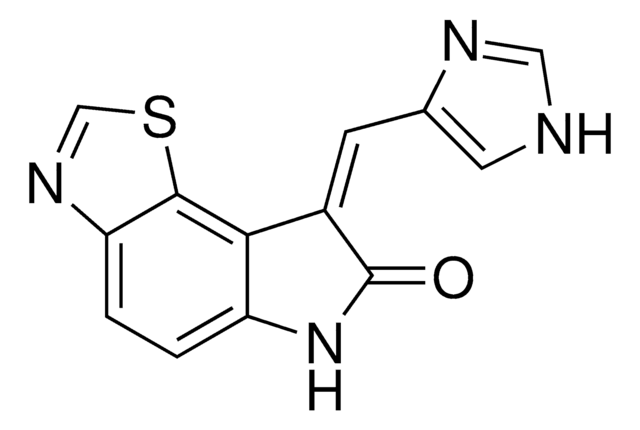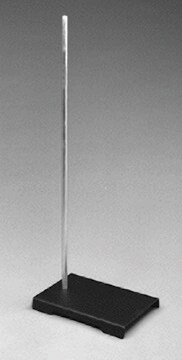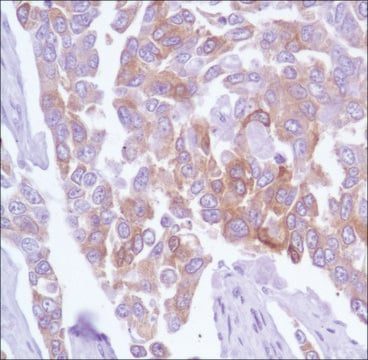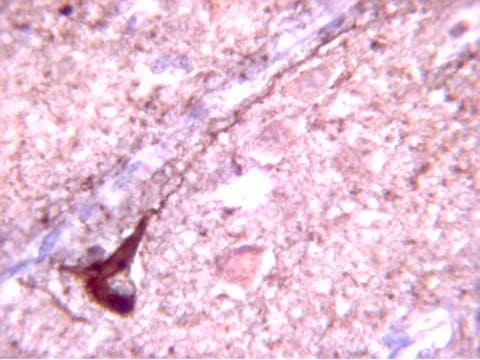AB9674
Anti-Tau phospho Serine 199/202 Antibody
Chemicon®, from rabbit
Synonim(y):
Anti-Anti-DDPAC, Anti-Anti-FTDP-17, Anti-Anti-MAPTL, Anti-Anti-MSTD, Anti-Anti-MTBT1, Anti-Anti-MTBT2, Anti-Anti-PPND, Anti-Anti-PPP1R103, Anti-Anti-TAU, Anti-Anti-tau-40
About This Item
Polecane produkty
pochodzenie biologiczne
rabbit
Poziom jakości
forma przeciwciała
affinity purified immunoglobulin
rodzaj przeciwciała
primary antibodies
klon
polyclonal
oczyszczone przez
affinity chromatography
reaktywność gatunkowa
human
producent / nazwa handlowa
Chemicon®
metody
western blot: suitable
numer dostępu NCBI
numer dostępu UniProt
Warunki transportu
dry ice
docelowa modyfikacja potranslacyjna
phosphorylation (pSer199/pSer202)
informacje o genach
human ... MAPT(4137)
Opis ogólny
Specyficzność
Immunogen
Zastosowanie
Neuroscience
Neurodegenerative Diseases
Optimal working dilutions must be determined by the end user.
Przechowywanie i stabilność
Informacje prawne
Oświadczenie o zrzeczeniu się odpowiedzialności
Nie możesz znaleźć właściwego produktu?
Wypróbuj nasz Narzędzie selektora produktów.
Kod klasy składowania
10 - Combustible liquids
Klasa zagrożenia wodnego (WGK)
WGK 2
Certyfikaty analizy (CoA)
Poszukaj Certyfikaty analizy (CoA), wpisując numer partii/serii produktów. Numery serii i partii można znaleźć na etykiecie produktu po słowach „seria” lub „partia”.
Masz już ten produkt?
Dokumenty związane z niedawno zakupionymi produktami zostały zamieszczone w Bibliotece dokumentów.
Nasz zespół naukowców ma doświadczenie we wszystkich obszarach badań, w tym w naukach przyrodniczych, materiałoznawstwie, syntezie chemicznej, chromatografii, analityce i wielu innych dziedzinach.
Skontaktuj się z zespołem ds. pomocy technicznej
